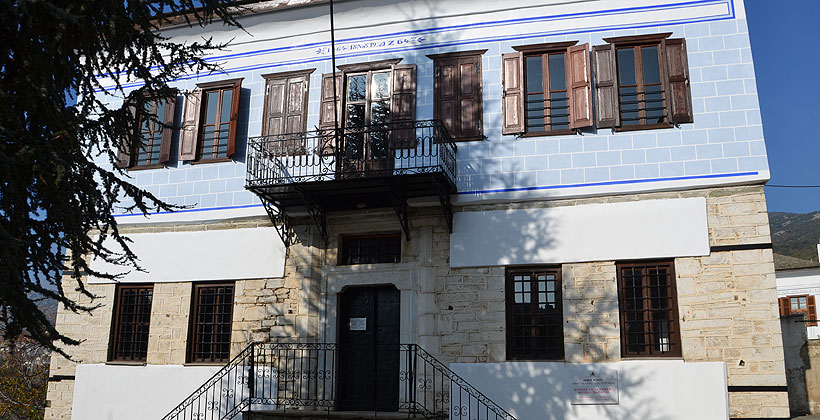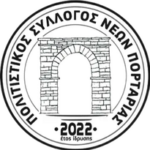Historical and Folklore Museum of Portaria
The Historical and Folklore Museum of Portaria is housed in the two-story Mansion of the Municipality of Zoulia. Built in the second half of the 19th century, specifically in 1864, it represents a characteristic example of the “Egyptian” mansions, which were built by wealthy individuals from Pelion mainly engaged in activities in Egypt.
These particular mansions distinguish themselves from the pre-existing traditional Pelion mansions by the addition of a double staircase and balcony on the exterior, while internally they maintain the same layout across all floors with symmetric arrangements of rooms. Their features include the monumental staircase at the entrance hall of the mansion and the spacious hall on the second floor.

The building was acquired by the Community of Portaria with funds donated by the painter Chrysoula Zogia, originally from Portaria, with the aim of housing the village museum. Additionally, it was declared a preserved monument and restored by the 5th Ephorate of Byzantine Antiquities in collaboration with the Community of Portaria. Since 1994, it has housed the Historical and Folklore Museum of Portaria, while at times it has accommodated various other public facilities such as the town hall and the elementary school. The current permanent exhibition of the museum was inaugurated in May 2021.
The museum collections are displayed on the two floors of the mansion, covering the spaces of seven rooms, the staircase hall, and the central hall. The first floor includes items rescued from the luxurious hotel “Mega Theoxenia,” highlighting the particular characteristics of Portaria that established it as a significant resort center from the early 20th century onwards. Documentation of the administrative and economic development of the Municipality of Orminio and subsequently the Community of Portaria is also included, comprising documents, minutes of the Municipal Council, electoral rolls, and the 1881 census. Additionally, there are photographs, documents, and other evidence of the presence of Portarians in Egypt in the early 20th century.
Ascending the staircase to the second floor, visitors have the opportunity to take a brief mental stroll through Portaria via postcards presenting various significant landmarks and buildings of the village. The first paved road in Greece connecting Portaria with Volos and the first bus, the “Aetos,” are showcased. On the second floor, the daily life of the Portarians is presented, along with the economic and cultural movement before and after World War II, as depicted through photographs, documents, everyday use items, household utensils, handmade lace, and wedding photographs. Finally, the grand dining room dominates the hall, adorned with elaborate tableware and surrounded by portraits of prominent Portaria families. It’s worth noting that the basement of the mansion, housing the library with rare editions, historical books, and literature of interest, is also open to visitors.
Nikolaos Kontovas. Μuseumologist. Curator of the permanent exhibition at the Historical and Folklore Museum of Portaria.
